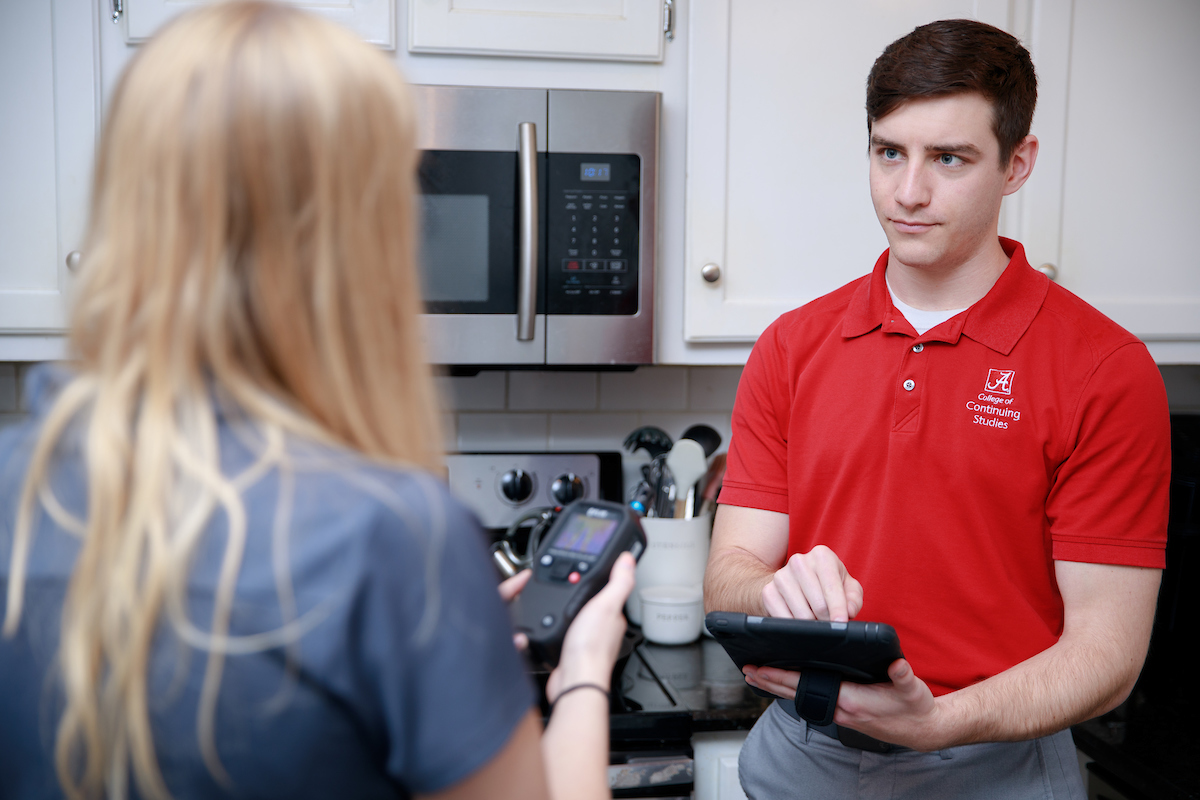Persistent, untreated environmental hazards in a house can cause short- and long-term suffering for the people who live there, but a program implemented by The University of Alabama hopes to provide relief for some families.
UA SafeState and the Alabama Life Research Institute are managing a $2 million Healthy Homes Production Grant, jointly awarded to the Alabama Department of Public Health from the U.S. Department of Housing and Urban Development. The grant will help SafeState remove environmental and safety hazards from some of Alabama’s vulnerable and underserved communities.
The Healthy Homes and Healthy Communities in the Black Belt Region of Alabama program will target approximately 150 low-income homes to identify and provide solutions for environmental hazards like indoor air quality, mold and moisture, pests, carbon monoxide, lead-based paint, asbestos and radon, as well as general safety hazards like indoor and outdoor structural issues.
These hazards can lead to issues, among others, with breathing, mental health, brain function and child development that can be costly for families not just in health care expenses, but with employment and school performance.
“Through this work, we can improve the health of vulnerable children and families and truly change the socioeconomic status of families who take part in the program,” said Donald Elswick, executive director of UA SafeState. “We don’t have unlimited resources, but changing the lives of 150 homes is valuable to Alabama, and we look forward to working with our partners.”
Qualifying families will receive a no-cost assessment from UA SafeState inspectors who will identify health and safety issues. The program can provide each home up to $10,000 for repairs and remediation to reduce or eliminate hazards.

The ADPH and UA are establishing the application process for qualifying families, and public events will be scheduled throughout the affected counties to bring awareness to the program.
The grant also allows UA to perform two health assessments of those picked for the program, one prior to repair and six months later, to understand the health concerns of the communities, said Sharlene Newman, executive director of the Alabama Life Research Institute at UA.
“UA researchers with ALRI are committed to studying the impact of environmental pollutants on the health and well-being of the people of Alabama with the aim of helping to improve the health of its residents,” Newman said. “This HUD grant provides us with an opportunity to build relationships in the community, understand the environmental toxins they may be exposed to in their homes, and assess their health and health concerns. The foundational information we obtain as a result of this project will be invaluable in the development of future research and community partnerships.”
The project aims to build and enhance partner resources to develop the most cost-effective methods for identifying and controlling key housing-related environmental health and safety hazards.
For more information on the program, visit www.healthyhomes.ua.edu or contact staff at healthyhomes@ua.edu.
Started in 1979, UA SafeState, part of the College of Continuing Studies, works with companies, municipalities and organizations to find effective solutions to challenging environmental and occupational safety and health problems.
Contact
Adam Jones, UA communications, 205-348-4328, adam.jones@ua.edu
